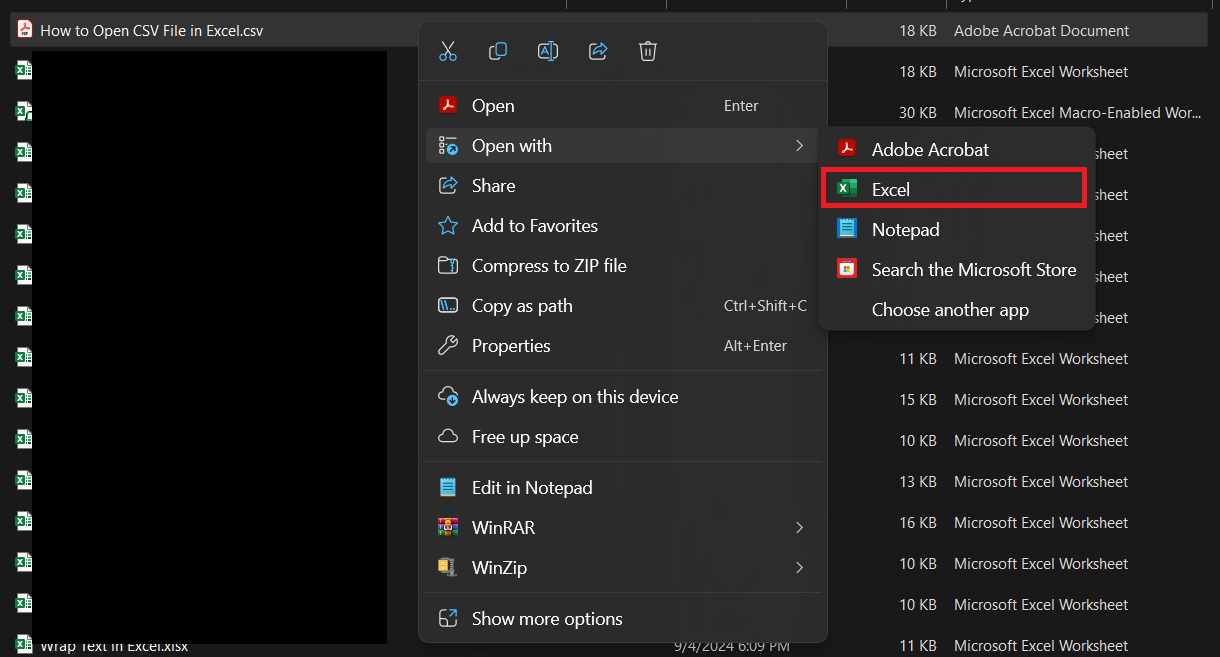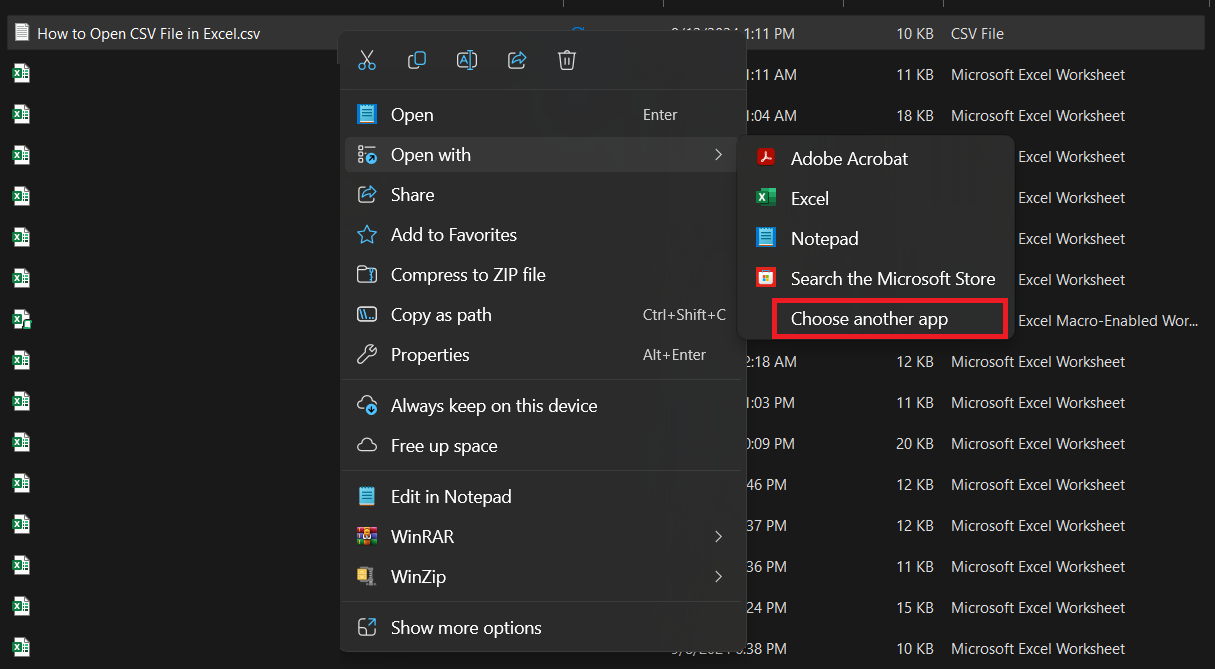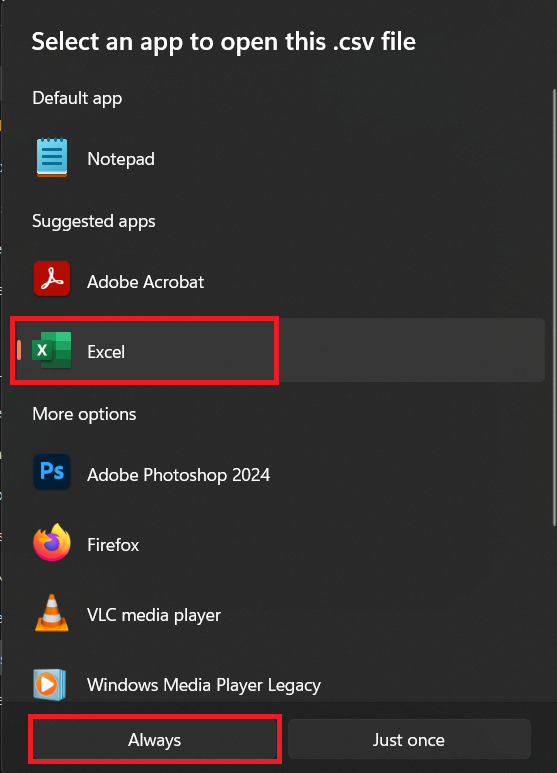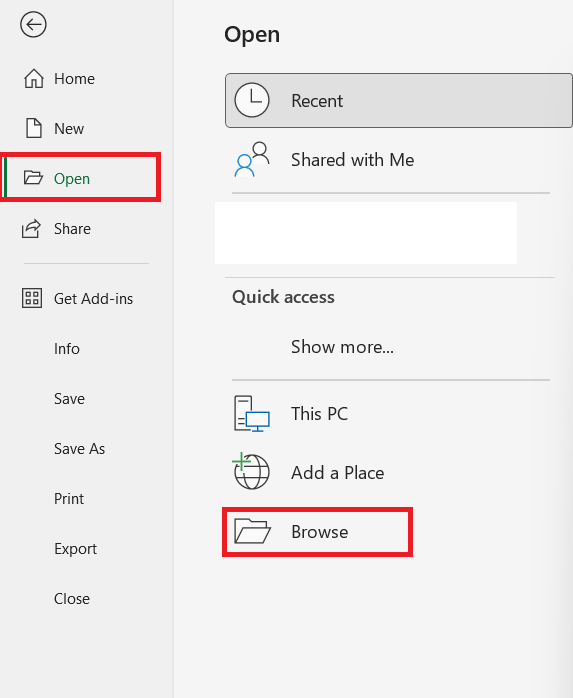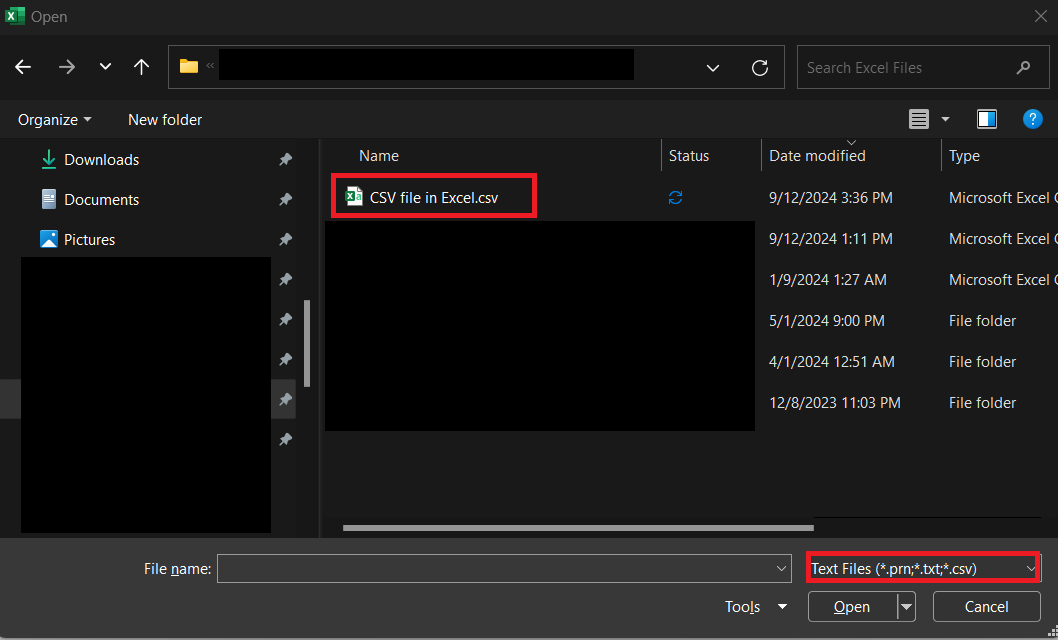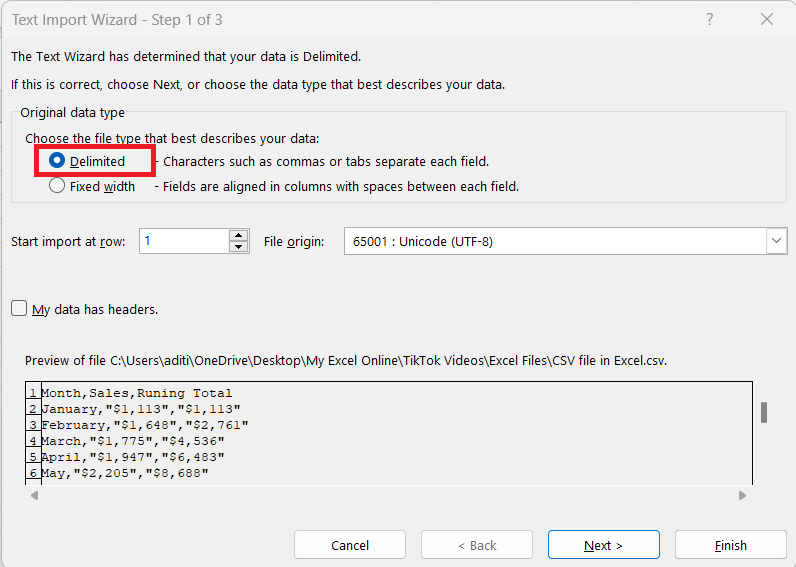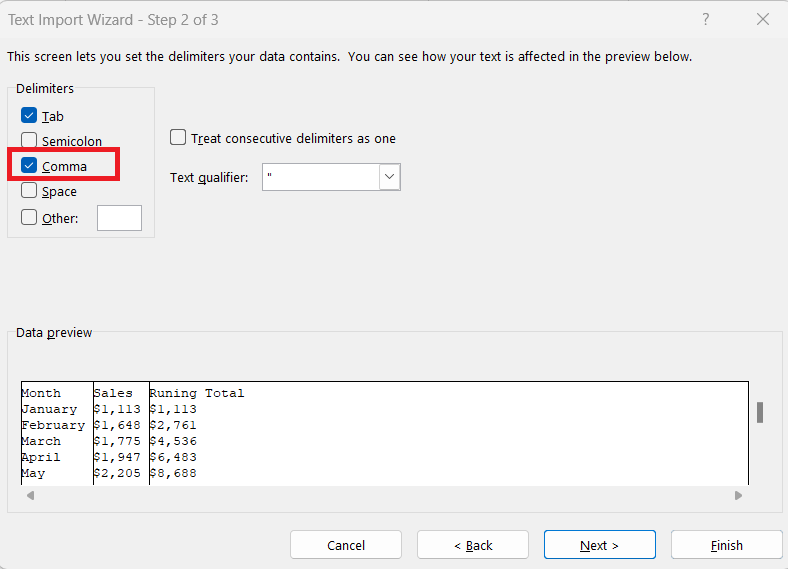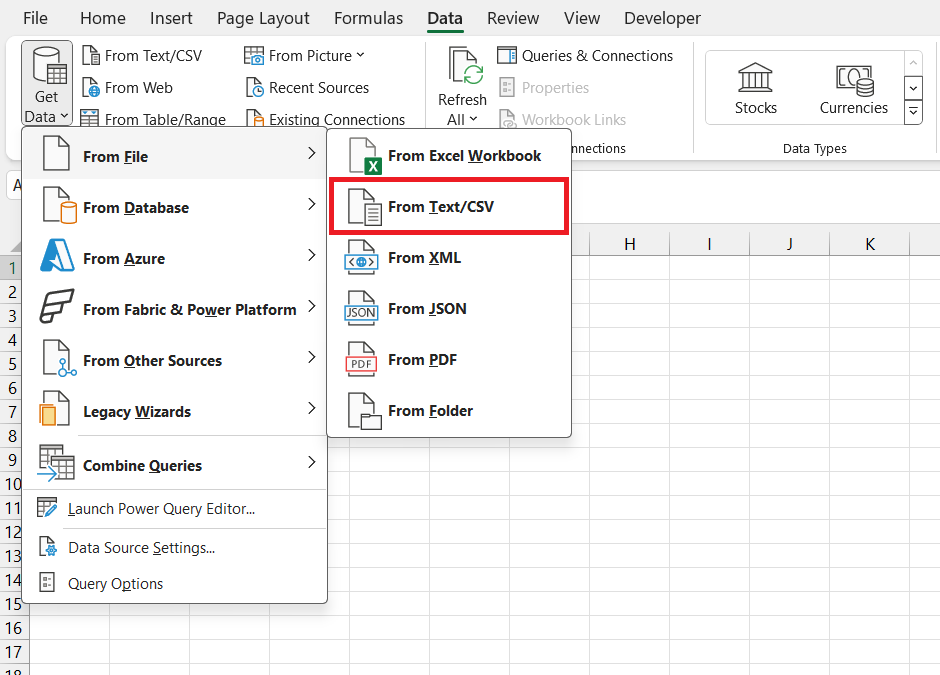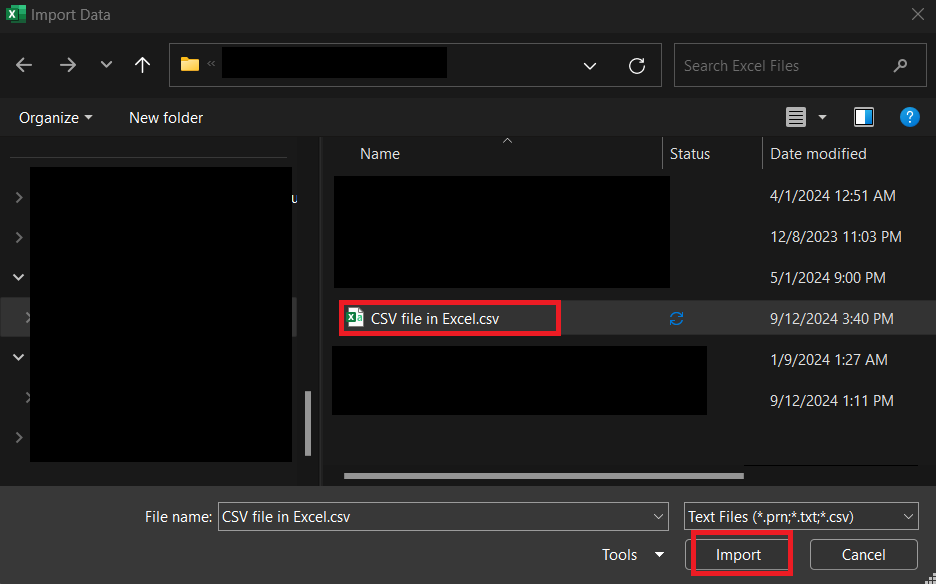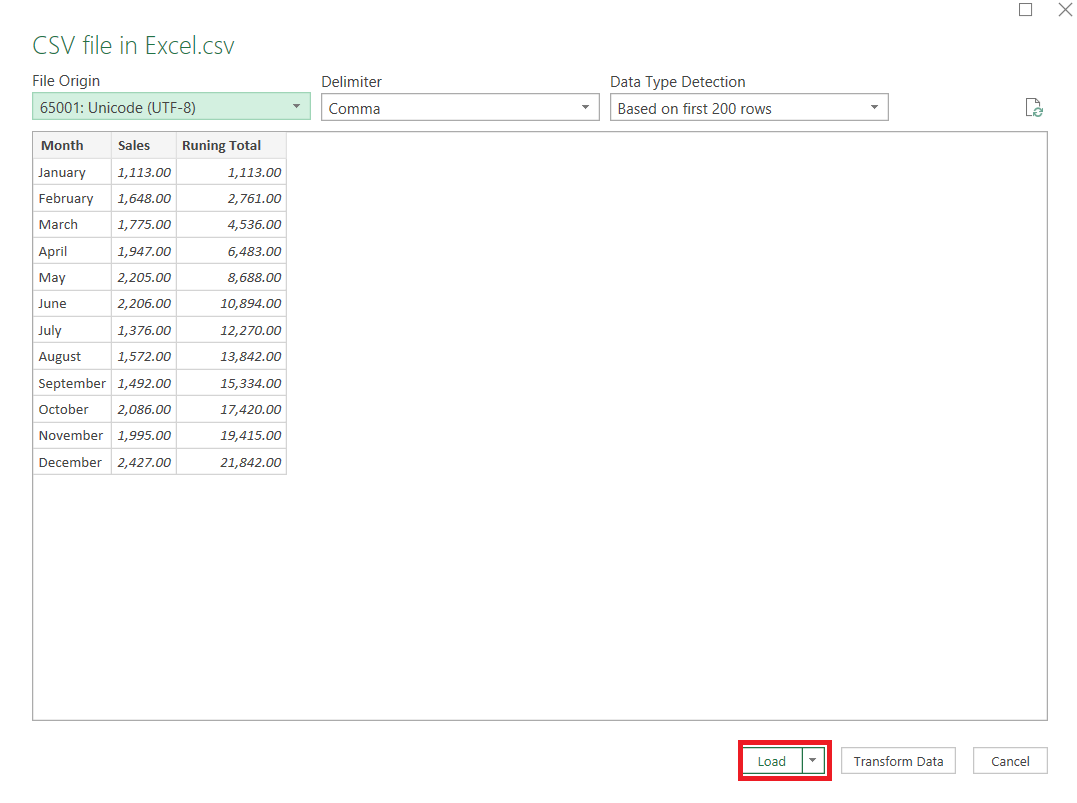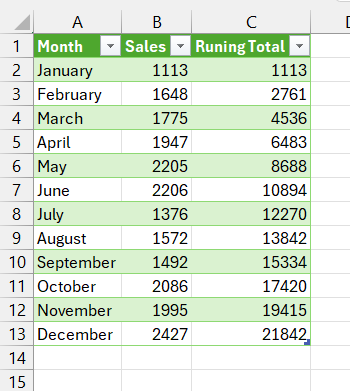CSV (Comma-Separated Values) files are one of the most common formats for storing and exchanging data, especially between different software platforms. When you need to work with CSV files in Excel, opening them properly is key to avoiding data formatting issues. In this guide, I’ll walk you through different methods on how to open CSV file in Excel and highlight some key considerations to ensure that your data is displayed correctly.
Key Takeaways:
- CSV files are versatile for sharing and storing data between platforms.
- Excel offers a user-friendly interface to easily manage and analyze CSV data.
- Power Query in Excel simplifies advanced CSV imports and updates.
- Delimiters and data formats must be customized to ensure proper CSV import.
- Resolving import errors involves checking file format, delimiters, and Excel version compatibility.
Table of Contents
Introduction to CSV Files and Excel
The Versatility of CSV Format
Storing and sharing data in a versatile and efficient format is essential, especially when dealing with large amounts of information. That’s where the CSV format shines. It stores data by separating values with commas, making it incredibly adaptable.
It can be used to move information rapidly between different programs or platforms, and it often forms the backbone of data transfer processes in systems like e-commerce platforms.
Why Excel is a Go-To for CSV Files
One of the main reasons Excel is a go-to for handling CSV files is its user-friendly interface. Being part of the Microsoft Office suite, Excel offers the ability to easily view, edit, and organize data in a spreadsheet format, which can be less intimidating and more visually manageable than a block of comma-separated text.
Excel’s powerful set of tools also allows for extensive data manipulation, from simple sorting and filtering to complex analytics with pivot tables. Moreover, Excel’s widespread usage makes it a common choice for compatibility and collaboration purposes.
Step-by-Step Guide on How to Open CSV file in Excel
Opening CSV Files Directly in Excel
Opening a CSV file directly in Excel is a swift and straightforward process. If Excel is the default app for .csv files, a double-click in Windows Explorer is all it takes to view your data in a tidy spreadsheet; a familiar green Excel icon will indicate this association next to the .csv documents.
But if another program has hijacked the CSV associations, a simple right-click on the file, followed by selecting ‘Open with… > Excel,’ will grant you access to your data in Excel’s capable hands.
To make Excel your default application for opening certain file types (like .xlsx, .xls, .csv, etc.), follow these steps based on your operating system:
STEP 1: Right-click on an Excel file: (e.g., a .xlsx file). Select “Open with” from the context menu, then click “Choose another app”.
STEP 2: In the new window, select Microsoft Excel. Select “Always”.
Import the CSV File Using Excel’s “Open” Feature
This method provides more control over how your data is imported, such as allowing you to specify the correct delimiter or adjust the text encoding.
STEP 1: Open a Blank Excel Workbook. In the upper-left corner of Excel, click on the “File” tab.
STEP 2: From the sidebar, click on “Open.” Then select “Browse” to navigate to the location of your CSV file.
STEP 3: In the “Open” dialog box, change the file type from “All Excel Files” to “Text Files” or “CSV Files” to display CSV files. Choose your file and click “Open.”
STEP 4: If Excel detects that the file needs special processing, the “Text Import Wizard” will appear. Here, you can select:
- Delimited: For CSV files, choose this option.
- Delimiter Type: Ensure “Comma” is selected as the delimiter (Excel will use a comma by default for CSV files).
Click “Finish” to complete the import. Excel will now display your data, correctly separated into columns.
Connecting to an External CSV File with Power Query
Connecting to an external CSV file with Power Query in Excel is a robust approach to data management for those looking to harness advanced data transformation and analysis capabilities. Power Query excels in automating the import and refreshing of data, ideal for CSV files that are frequently updated.
Let’s walk step-by-step:
STEP 1: Open a new Excel sheet, select the Data tab, then click “Get Data (Power Query)”.
STEP 2: Select “From Text/CSV” as the data source.
STEP 3: Click “Browse” to select the file.
STEP 4: Click on Load.
Using Power Query, we customize the data import through a rich set of transformations and data type settings. It updates effortlessly; the imported table dynamically syncs with the original CSV upon each refresh.
This connectivity feature avoids repetitive manual updates and keeps the data analysis robust and current, saving us time and ensuring consistency across reports.
Tips for Handling CSV Data in Excel
Ensuring Data Integrity
When working with CSV files in Excel, ensuring data integrity is non-negotiable. The foremost step is to prevent Excel from auto-formatting data such as dates or leading zeros, which can be critical. Before importing the CSV, it’s advisable to format all cells as ‘Text’ to deter unwanted changes.
Additionally, reviewing the CSV content in a text editor beforehand can guide us in recognizing areas needing special attention during the import.
Preventative actions such as these safeguard the correctness of the data—a cornerstone for reliable analysis and decision-making processes.
Customizing the Delimiters and Formats
Customizing the delimiters and formats within Excel to handle CSV files can be a game changer, particularly when dealing with data structured differently from Excel’s default settings. To ensure proper alignment of data upon import, we can select a specific delimiter through Excel’s import settings – this could be a comma, semicolon, or even a tab, matching our CSV file’s format.
For instance, if the CSV employs semicolons instead of commas, we can navigate to the Data tab, choose ‘From Text/CSV,’ and select ‘Delimited.’ In the ensuing dialog box, we’re empowered to choose the appropriate delimiter, allowing the data to be correctly parsed into separate columns.
By customizing the delimiters, we avoid pesky import errors and ensure that data appears in an organized, coherent manner, ready for us to analyze or manipulate.
Troubleshooting Common CSV Import Issues in Excel
Addressing Compatibility Problems with Different Excel Versions
When addressing compatibility problems with different Excel versions, a common sense approach goes a long way. It’s crucial to realize that features can differ across versions, and older versions may not support some of the newer functionalities. For example, Excel 2007 won’t natively handle files created by Excel 2019 with the same elegance due to the format changes and feature enhancements introduced over the years.
To navigate these discrepancies, here’s what we can do:
- Save the CSV in a universally compatible format like .xls or .xlsx, if collaboration with users of multiple Excel versions is needed.
- Propose users of older Excel versions to install compatibility packs or update their software, if feasible.
- Use common features and avoid version-specific functionalities when preparing a CSV file that needs to be compatible across various versions of Excel.
By understanding and applying these compatibility checks, we can ensure that our CSV data remains accessible and intact, regardless of the Excel version.
Resolving Errors During CSV File Import
Resolving errors during CSV file import can sometimes feel like solving a mystery. Errors often stem from discrepancies in data format, file corruption, or incorrect delimiter usage. Here’s how we tackle these issues for a hassle-free import:
- Format Check: Before import, I verify the CSV in a text editor to confirm the data’s structure.
- Delimiter Consistency: I ensure the delimiter used in the CSV matches Excel’s expected delimiter. If not, I adjust it via Excel’s import settings.
- Data Cleanup: I look out for and rectify special characters or line breaks within cells that may cause import errors.
I also recommend keeping backup copies of the original CSV files. In case something goes wrong, I can always start afresh without losing any data.
By anticipating these errors and knowing the remedies, we maintain data accuracy and effectively leverage Excel for our statistical analyses or reporting tasks.
FAQ: Frequently Asked Questions
How do I convert a CSV file to an Excel file?
To convert a CSV file to an Excel file, I open the CSV file in Excel, check that all data is displayed correctly, and then simply save the file using the ‘Save As’ feature. In the dialog box, I select ‘Excel Workbook (*.xlsx)’ from the ‘Save as type’ dropdown menu. Finally, I choose a location to save the converted file and click ‘Save’. This method retains the original CSV file while creating a new Excel workbook.
Can I Change the Default Delimiter in Excel When Importing CSV Files?
Yes, I can change the default delimiter in Excel when importing CSV files. This adjustment is done through the system settings rather than Excel directly. On Windows, I change the delimiter via the Region settings in the Control Panel. For macOS, the delimiter is adjusted in System Preferences under ‘Language & Region’. Once modified, these changes will affect all programs, not just Excel, so it’s important to be mindful of the implications.
What Should I Do If My CSV Data Does Not Display Correctly in Excel?
If my CSV data does not display correctly in Excel, I’ll review it first in a text editor to verify its structure. Post verification, I open the file in Excel using the ‘From Text/CSV’ function in the Data tab. This allows me to specify the correct delimiter and data types during import. If there are still issues, I check for extra delimiters or mismatched quotes that could disturb the data alignment, and I clean these up either manually or through find-and-replace functions.
Is It Possible to Open a CSV File from Windows Explorer into Excel?
Absolutely, I can open a CSV file from Windows Explorer into Excel with a quick double-click, provided Excel is set as the default app for CSV files. If another app is the default, I would right-click the CSV file, select ‘Open with,’ and choose Excel from the list. If I plan to do this often, setting Excel as the default app for CSV files is a time-saver.
How Can I Avoid Losing Data When Editing CSV Files in Excel?
To avoid losing data when editing CSV files in Excel, my first step is to always create a copy of the original CSV file before making any changes. I also ensure to keep the cell format to ‘Text’ to prevent Excel from auto-formatting data like dates and leading zeroes. Once I’m ready to save my edits, I use the ‘Save As’ function and carefully choose ‘CSV (Comma delimited) (*.csv)’ as the file type to preserve the CSV format.
Why is my CSV file not opening in Excel?
If my CSV file isn’t opening in Excel, it might be due to an incorrect file association or formatting issues within the file. I’d check the default program settings first and ensure Excel is set to open CSV files. Then I’d inspect the actual file for any irregularities such as inconsistent delimiters or corrupted data. If necessary, I could open the CSV in a text editor and manually fix any evident issues.
John Michaloudis is a former accountant and finance analyst at General Electric, a Microsoft MVP since 2020, an Amazon #1 bestselling author of 4 Microsoft Excel books and teacher of Microsoft Excel & Office over at his flagship MyExcelOnline Academy Online Course.


